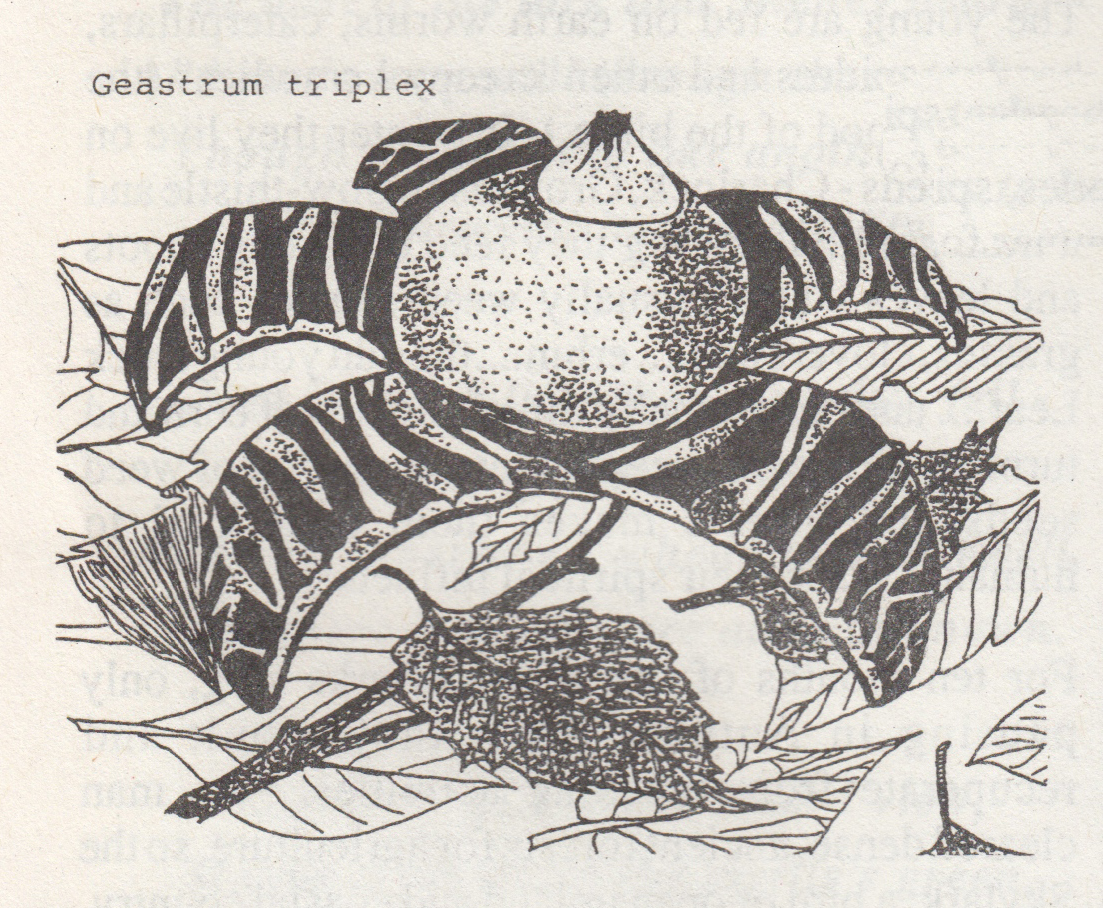This is an ongoing project. Logs are left here that have been inoculated with spores of Shiitake, Chicken of the Woods, Oyster Fungus
Starting in the 1990s, this ongoing demonstration project aims to promote fungi by creating habitats for them and introducing stumps, sunken logs, leaf litter, and areas of grass inoculated with various fungi species. Rare Earth stars can be found here.
 Stave Hill is an artificial site. The organic layer is being developed gradually by adding tree chippings, leaves collected from other sites and coppice management. Coppicing produces more and larger leaves, producing more leaf litter. In the pioneer woodland areas the ground has been improved by adding a couple of inches of spent mushroom compost. A rich humus layer is the foundation of a diverse ecosystem. It supports more ground dwelling organisms such as beetles, slugs and snails, which in turn provide food for birds and hedgehogs.
Stave Hill is an artificial site. The organic layer is being developed gradually by adding tree chippings, leaves collected from other sites and coppice management. Coppicing produces more and larger leaves, producing more leaf litter. In the pioneer woodland areas the ground has been improved by adding a couple of inches of spent mushroom compost. A rich humus layer is the foundation of a diverse ecosystem. It supports more ground dwelling organisms such as beetles, slugs and snails, which in turn provide food for birds and hedgehogs.>> Continue along the path and take a left hand turn through the hop garden, planted to reference the history of hop picking.
People living on the Rotherhithe peninsula were recruited as seasonal workers in the hop gardens of Kent, travelling on specially scheduled trains from London Bridge. A very early field recording documents a semi staged encounter between a policeman and a small boy on his way to join his family in the country. These were rare encounters with the rural environment and memorable breaks from industrial labour for many inner city residents. Photographs of hop picking can be found in the Rotherhithe Picture Library.
Earth star.
Drawing by Clifford Davy in "Finding Fungi", The Dock Leaf Winter/Spring 1990 p. 5